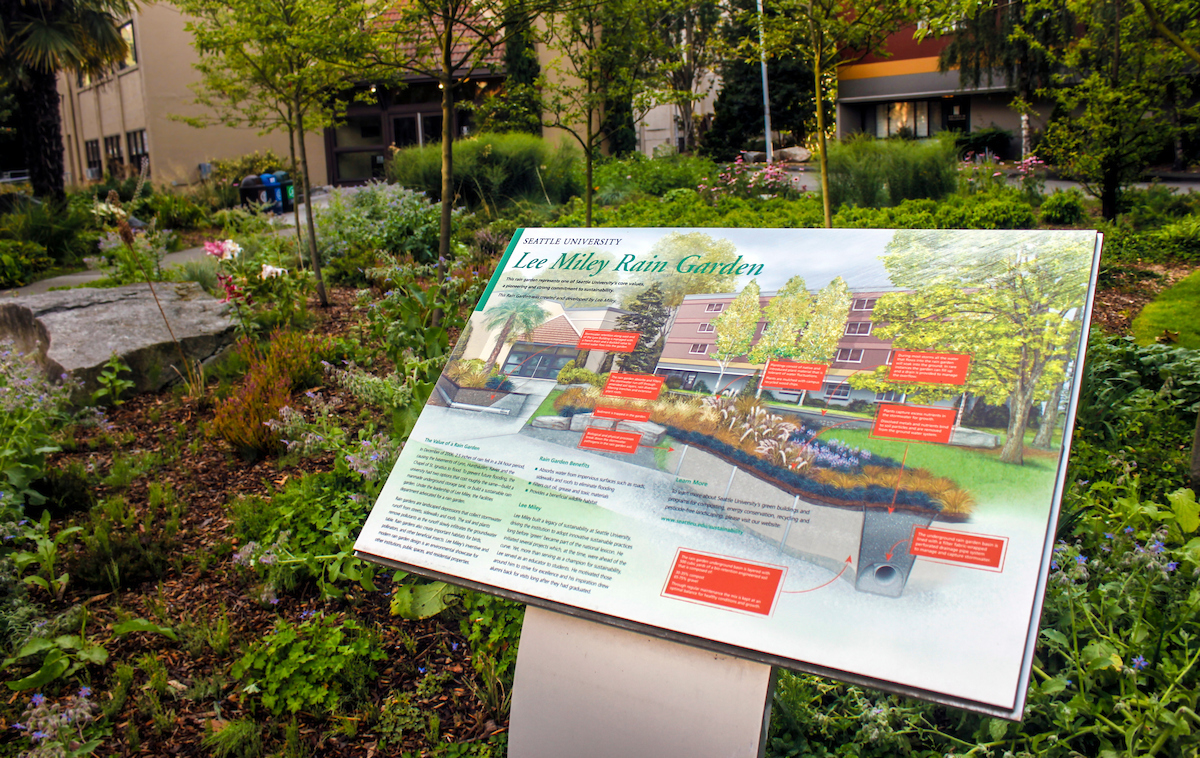Rain Gardens of SU
Seattle University's innovative rain gardens protect campus buildings by capturing stormwater runoff, filtering pollutants, and naturally recharging groundwater through engineered soil systems.
Rain gardens are landscaped depressions that collect rain water runoff from streets, sidewalks and roofs. The soil and plants remove pollutants as the runoff slowly infiltrates the groundwater table. They capture and hold runoff in the specially engineered soil, slowly recharge the ground water, and protect storm drains from overflow during intense storm events.
The first engineered rain garden or bioretention swale at Seattle University grows in what was formerly a lawn in front of the 1103 Building. After an historical rain event in 2006 flooded the basements of 1103, Hunthausen, Xavier, and the Chapel, this garden was designed to capture runoff from Spring and Madison streets.
For Our Waterways, Salmon, and Other Wildlife
- Reduced stormwater runoff = less erosion and sediment in salmon streams
- Increased groundwater recharge = better summer stream flows
- Less demand for irrigation water supply = more water in rivers for wildlife
- Bio-filtration of urban pollutants (running through compost-amended soil filters out 60-95% of contaminants)
- Less need for fertilizers and pesticides, so less washing off into streams
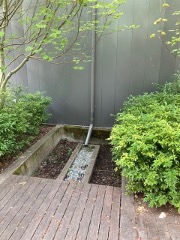
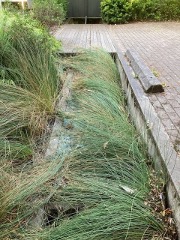
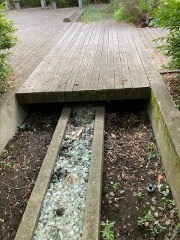
The rain garden is planted with native rushes collects and briefly detains rainwater from the buildings roof and the courtyard paving. Rainwater is eventually released into the underground cistern where it is stored to supply a portion of the irrigation water.
Native and drought tolerant landscaping uses water efficient drip irrigation. Permeable pavers allow rainwater rain water to return directly to the soil.
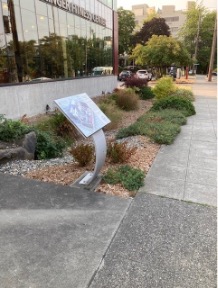
This facility represents one of Seattle University's core values, a pioneering and strong commitment to sustainability.
LEED Gold Building Landscape includes native and drought tolerant plantings requires minimal irrigation.
The rain garden receives storm water runoff from the building that is stored in underground vaults.
The rain garden between the Lynn building and the Chapel was completed in November 2007 as a solution to winter rains flooding the basements of Lynn, Hunthausen, Xavier and the Chapel buildings. A rain garden is an excavated depression planted to look like a garden. Stormwater infiltrates through layers of soil and gravel as plants transpire moisture and help filter pollutants. Surface area equaling 17,740 sq. ft drains into this rain garden. The rain garden is ten feet deep, lined with a special fabric and perforated drainage system, and filled with a bio-retention mix designed to absorb and retain as much water as possible. Two trenches along the Lynn building west wall route water away from the building. One trench fills the rain garden and the other trench diverts the water from the building's foundation to the City's combined sewer overflow system. As the garden reaches capacity, excess water flows into the City's combined sewer overflow system.
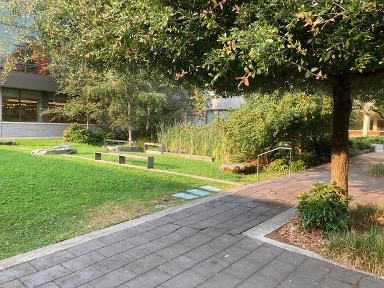
The McGoldrick Learning Commons addition, the plaza, Columbia St. and the lower mall (11th Ave.) all contribute water to the lower rain garden. Grates in the hard surface of the plaza directly send water into the rain garden. The lower rain garden is about 2,100 sq ft and has a volume of about 20,000 gallons of freeboard (not including the capacity of the soil). A 10,000 gallon cistern fills, filters, and holds water from the Commons addition roof before releasing it into the lower rain garden. The rain gardens can handle approximately 1.7” of water over the entire site in a 24 hour period of time without overflowing any water into the city storm drains. This is approximately 100,000 gallons of water managed on site for any given storm event. The system was designed to handle a 25 year storm event.
The “water wall” feature uses 100% rain water. The cistern behind the wall is about 2,500 gallons with a cartridge filter and an ultraviolet light for water purification. The granite face used for the water wall is repurposed from the old lobby of the Lemieux Library building.
The original building discharges water into two rain gardens on either side of the west entrance. The west side rain gardens are lined because of historic issues with water intrusion into the library basement. This is a closed system, running from south to north into a HDP-lined swale with a 3ft deep soil/gravel mix.
Total volume of the all rain gardens and swales (west side swales, north side swale, cistern, and lower rain gardens) is about 25,000 gallons.
The Commons addition roof is approximately 11,000 sq ft, the original library roof is about 18,000sq ft, so the annual run-off for these two structures is approximately 678,600 gallons.
A little over two million gallons of water falls on the site in an average year. The project site is a little more than two acres.
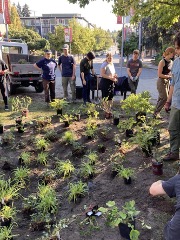
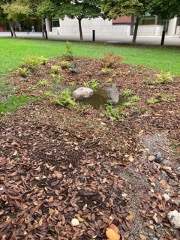 The students of Seattle University’s chapter of Engineers for a Sustainable World constructed a small detention rain garden on SU’s campus with the help of SU Grounds on 2022. The project’s goal was to give students the opportunity to design, plan, and build a rain garden while addressing stormwater concerns in an urban area. The rain garden features native plantings, including grasses, strawberries and shrubs, chosen by students and approved of by SU Grounds. The project began with design sessions assisted by landscape architecture professionals from the Berger Partnership and Urban Rain Design.
The students of Seattle University’s chapter of Engineers for a Sustainable World constructed a small detention rain garden on SU’s campus with the help of SU Grounds on 2022. The project’s goal was to give students the opportunity to design, plan, and build a rain garden while addressing stormwater concerns in an urban area. The rain garden features native plantings, including grasses, strawberries and shrubs, chosen by students and approved of by SU Grounds. The project began with design sessions assisted by landscape architecture professionals from the Berger Partnership and Urban Rain Design.
The rain garden supports biodiversity, ecosystems, plants with staggered blooming schedules to increase habitat for pollinators throughout the year.
Washington Native Plant Society awarded educational grant funding for the purchase of plants and drainage materials.
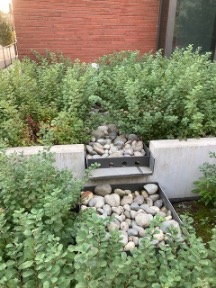
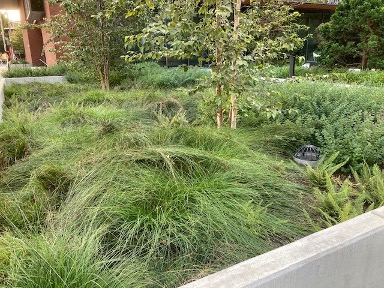 The Sinegal Center is the fifth building to receive LEED Gold certification and is surrounded by bioretention planters engineered to receive and detain stormwater runoff from the building. The bioplanters use soil, plants and microbes to treat stormwater before it is discharged into ground water. Bioretention planters are shallow depressions filled with sandy soil, topped with a thick layer of mulch and planted with dense vegetation.
The Sinegal Center is the fifth building to receive LEED Gold certification and is surrounded by bioretention planters engineered to receive and detain stormwater runoff from the building. The bioplanters use soil, plants and microbes to treat stormwater before it is discharged into ground water. Bioretention planters are shallow depressions filled with sandy soil, topped with a thick layer of mulch and planted with dense vegetation.
